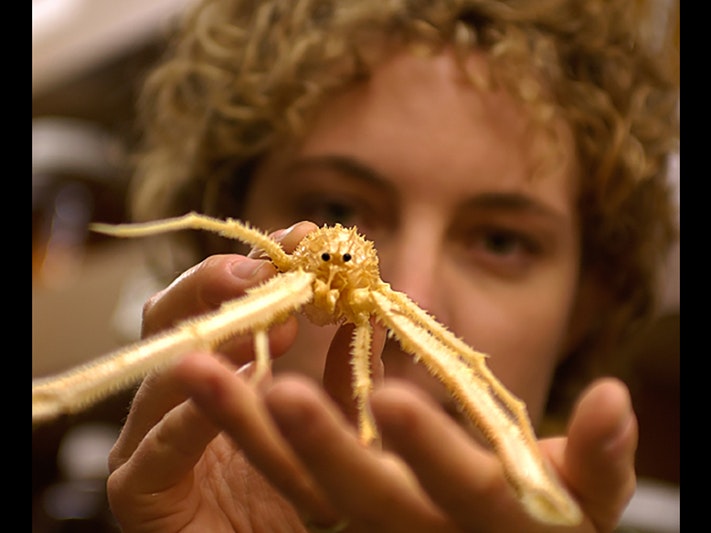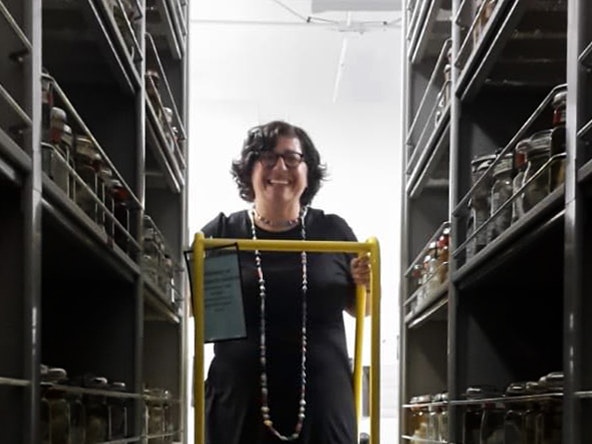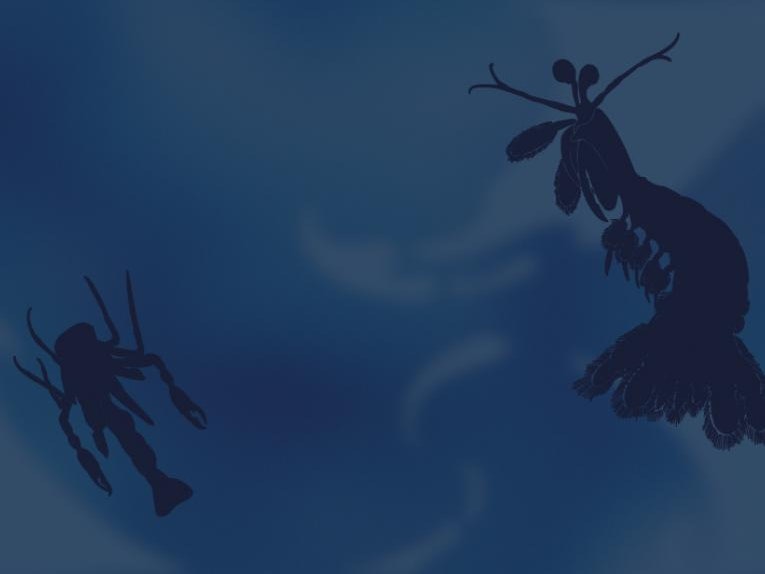
Meet the carcinologists: Kareen Schnabel
Carcinologists are the people who study the world of crustacea. In this series, they talk about the captivating creatures they love – creatures that as it turns out live all around us…
Free museum entry for New Zealanders and people living in New Zealand
Open every day 10am-6pm
(except Christmas Day)
Free museum entry for New Zealanders and people living in New Zealand
Carcinologists are the people who study the world of crustacea. Three of those experts have helped to shape Clever Crustaceans in partnership with NIWA.
Here, Te Papa Research Associate Rick Webber talks to MScSoc graduate Poppy McGuigan Hay about his work in the world of crustaceans.
Rick Webber. Photo by Norm Heke. Te Papa (92304)
An ex-sheep farmer, Rick became more interested in animal health and anatomy than farming, and so took up academic studies. He soon became fascinated by Crustacea, studying their morphology, reproductive biology, and taxonomy. Rick has dedicated much of his career to the identification of decapods: our crabs, lobsters, and shrimps, with a particular passion for descriptive writing and illustration of these crustaceans.
RW: My favourites are the larvae of crabs, lobsters and shrimps because they are not well known but are so important in the life cycles of these animals. But other groups such as Tanaidacea, Amphipoda, and Isopoda are also special to me.
RW: After completing an undergraduate degree majoring in biology, I had an opportunity to do a thesis on the larval development of Aotearoa New Zealand spider crabs. Their development proved so fascinating and complicated that I was hooked. Thereafter, I was employed by The National Museum in the Crustacea Department and have worked with the Crustacea collections ever since.
RW: Someone who studies crabs…. and lobsters and shrimps and all the other crustaceans of the world, in the sea, in fresh water, in rock pools, on sandy beaches and even on land.
RW: They’re everywhere except in the air; from the Himalayas to the deepest trenches, harbours, beaches, rivers and streams; forests and grasslands, pot plants and trees, burrows and rock pools; even in town. They have the greatest of size ranges – from giant Japanese spider crabs with 4 metres leg span down to minute tantilocarids, parasites of crustacean hosts that are themselves less than 1 mm long. The things you can do with an exoskeleton!
RW: I’m pretty pleased with recent research on the identity of land hoppers of Aotearoa New Zealand. Here was a good reason to use DNA analysis to more accurately identify these abundant and boringly similar but important animals properly. Subtle morphological (physical) differences backed up by DNA analysis quickly showed the presence of different species among hoppers that otherwise look the same.
RW: Being retired I’m gradually mopping up unfinished studies but enjoying it and in danger of hatching more!
RW: I am happily helping with a small exhibition on Aotearoa New Zealand crustaceans that I will be particularly pleased to see going to other, small provincial museums to share what our crustaceans are about.
RW: The variety of crustaceans in the world is truly awe-inspiring. Embrace their variety of forms and habitats. They are a one-stop entry to biology wherever you are in the world.
RW: I’m as keen on eating our edible crustaceans as anyone, but I do wish more New Zealanders knew about the variety and importance of them in our environment.
Aotearoa New Zealand has a modest number of crabs and other decapods compared to Australia but other groups are highly significant, including land hoppers which abound here. This makes them extra important in the diets of some of our native birds and of great importance in the leaf litter composting of our forests and subalpine grasses above the bush line.
Ground water crustaceans are also important indicator species of water quality in areas such as Canterbury where artesian water is so important to agriculture and other human uses. Our rock lobsters and scampi are both extremely valuable and well-managed marine resources as well.

Carcinologists are the people who study the world of crustacea. In this series, they talk about the captivating creatures they love – creatures that as it turns out live all around us…

Carcinologists are the people who study the world of crustacea. In this series, they talk about the captivating creatures they love – creatures that as it turns out live all around us…

Discover crustaceans’ smart survival tricks in a mini exhibition with real specimens and hands-on interactives. Created in collaboration with NIWA Taihoro Nukurangi.
Closed
22 May – 21 Aug 2023
Exhibition Ngā whakaaturanga